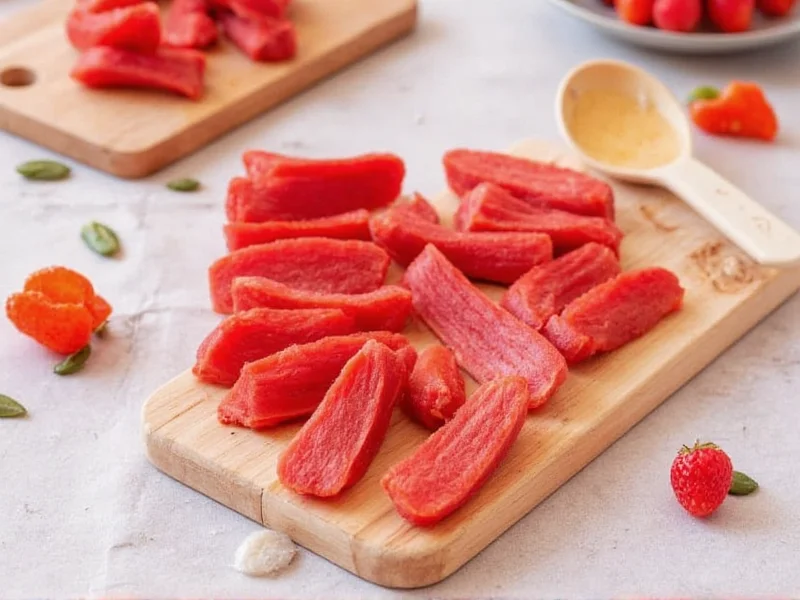Chamoy, that beloved Mexican condiment known for its perfect balance of sweet, sour, salty, and spicy flavors, has become increasingly popular worldwide. As more people discover this versatile sauce, a common question arises: does chamoy need to be refrigerated? Understanding proper storage is crucial for maintaining both the quality and safety of this unique condiment.
Understanding Chamoy's Composition and Shelf Stability
Chamoy's storage requirements stem directly from its ingredients. Traditional chamoy is made from pickled fruits (typically apricots, plums, or mangoes) that have been preserved in a brine of vinegar, salt, and chilies. This combination creates a product with natural preservatives, but also introduces elements that require careful handling.
The vinegar and high salt content give unopened chamoy significant shelf stability, allowing it to be stored at room temperature. However, the fruit components introduce organic matter that can spoil once exposed to air after opening. This explains why does chamoy need to be refrigerated after opening is such a common and important question for consumers.
Storage Guidelines for Unopened Chamoy
Before you break the seal on your bottle of chamoy, you can safely store it in your pantry or cupboard. Follow these guidelines for unopened products:
- Store in a cool, dark place away from direct sunlight and heat sources
- Maintain consistent temperatures below 75°F (24°C)
- Check the "best by" date on the packaging
- Most unopened commercial chamoy products remain shelf-stable for 12-18 months
During this unopened phase, the vinegar-based preservation system effectively prevents bacterial growth. The airtight seal maintains the product's integrity until you're ready to use it.
Why Refrigeration Is Essential After Opening
Once you open a bottle of chamoy, the storage requirements change significantly. The moment air enters the container, the risk of microbial growth increases. Refrigeration becomes necessary for several important reasons:
- Prevents mold growth - The fruit content provides nutrients for mold when exposed to air
- Maintains flavor profile - Refrigeration slows the chemical reactions that degrade complex flavors
- Preserves texture - Cold temperatures help maintain the proper consistency
- Extends usable life - Properly refrigerated chamoy lasts significantly longer
When considering how to store chamoy properly after opening, always transfer it to an airtight container if it didn't come in a resealable bottle. This minimizes air exposure and helps maintain quality.
| Storage Condition | Unopened Shelf Life | Opened Shelf Life | Quality Notes |
|---|---|---|---|
| Pantry (unopened) | 12-18 months | N/A | Best flavor retention when stored properly |
| Refrigerated (unopened) | 18-24 months | N/A | Slightly extends shelf life but not necessary |
| Room temperature (opened) | N/A | 3-5 days | Risk of spoilage increases daily |
| Refrigerated (opened) | N/A | 3-6 months | Best quality and safety when properly stored |
Signs That Chamoy Has Gone Bad
Even with proper refrigeration, chamoy eventually reaches the end of its usable life. Knowing the signs that chamoy has gone bad is essential for food safety. Look for these indicators:
- Visible mold - Any fuzzy growth on the surface or along the container edges
- Off smell - Sour or fermented odors beyond the normal tangy profile
- Texture changes - Unusual thickening or separation that doesn't resolve with stirring
- Color changes - Significant darkening or unusual discoloration
- Bubbling or fermentation signs - Active bubbling when the container is opened
If you notice any of these signs, discard the product immediately. Consuming spoiled chamoy could potentially cause foodborne illness, especially since does refrigerated chamoy last longer but doesn't make it immune to eventual spoilage.
Practical Storage Tips for Maximum Freshness
To get the most from your chamoy and ensure it maintains its distinctive flavor profile, follow these storage recommendations:
- Always use clean utensils when scooping chamoy to prevent introducing bacteria
- If transferring to another container, choose glass over plastic for better flavor preservation
- Keep the container tightly sealed when not in use
- Store at the back of the refrigerator where temperatures are most consistent
- Consider dividing large containers into smaller portions to minimize air exposure
The best way to keep chamoy fresh involves consistent refrigeration and proper container management. While some artisanal or homemade versions may have different requirements, commercially produced chamoy follows these general guidelines.
Special Considerations for Different Chamoy Types
Not all chamoy products are created equal. Understanding the differences can help determine specific storage needs:
- Bottled liquid chamoy - Most common commercial form, requires refrigeration after opening
- Chamoy powder - Typically shelf-stable before and after opening due to lack of moisture
- Chamoy candy or lollipops - Shelf-stable until individually wrapped
- Artisanal or homemade chamoy - May have shorter shelf life; always refrigerate after preparation
When in doubt about proper storage for Mexican chamoy, check the manufacturer's instructions on the label, as formulations can vary between brands.











 浙公网安备
33010002000092号
浙公网安备
33010002000092号 浙B2-20120091-4
浙B2-20120091-4